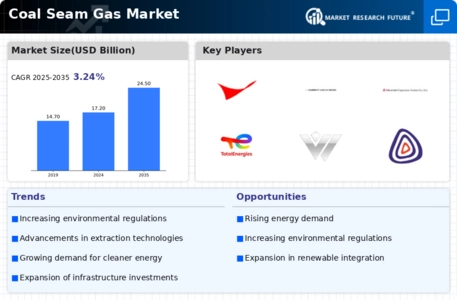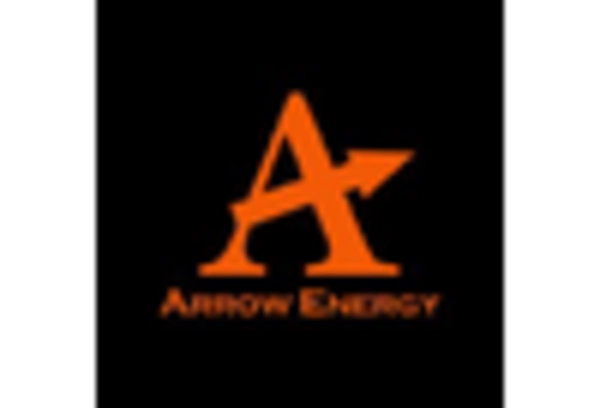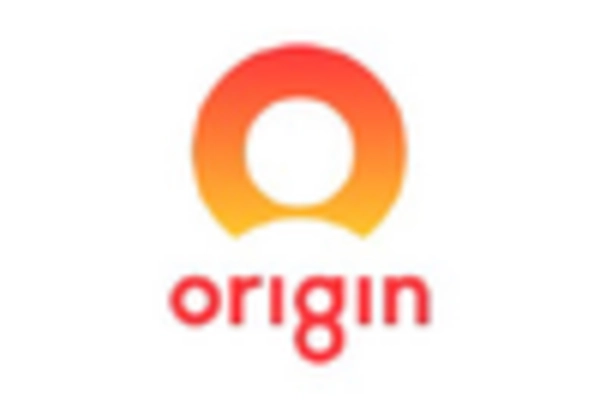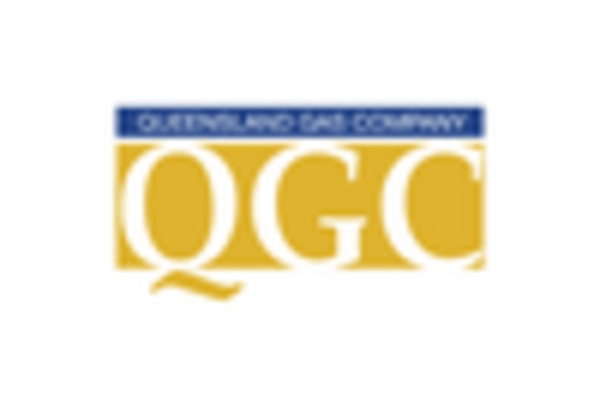Regulatory Support
Regulatory support for cleaner energy sources is a crucial driver for the Coal Seam Gas Market. Governments worldwide are increasingly implementing policies that favor natural gas over coal due to its lower carbon emissions. In 2025, many countries have established frameworks that incentivize the use of coal seam gas, including tax breaks and subsidies for production. This regulatory environment not only encourages investment in coal seam gas projects but also facilitates the transition from more polluting energy sources. The alignment of government policies with environmental goals is likely to enhance the competitiveness of coal seam gas in the energy market. As regulations continue to evolve, the Coal Seam Gas Market may experience accelerated growth, driven by both public and private sector initiatives aimed at promoting cleaner energy solutions.
Rising Energy Demand
The increasing The Coal Seam Gas Industry. As economies expand and populations grow, the need for reliable energy sources intensifies. In 2025, energy consumption is projected to rise by approximately 2.5% annually, with natural gas playing a pivotal role in meeting this demand. Coal seam gas, being a cleaner alternative to traditional coal, is likely to see heightened interest from energy producers. This shift towards natural gas is further supported by various countries aiming to reduce carbon emissions, thus enhancing the appeal of the Coal Seam Gas Market. The transition from coal to gas is expected to continue, as it aligns with global sustainability goals, potentially leading to increased investments in coal seam gas extraction and production.
Technological Advancements
Technological advancements in extraction and production methods are significantly influencing the Coal Seam Gas Market. Innovations such as hydraulic fracturing and horizontal drilling have enhanced the efficiency and safety of coal seam gas extraction. These technologies have reduced operational costs and increased yield, making coal seam gas a more attractive option for energy companies. In recent years, the implementation of advanced monitoring systems has improved resource management and environmental safety, further bolstering the industry's growth. As these technologies continue to evolve, they are likely to drive down costs and increase production rates, thereby expanding the market for coal seam gas. The ongoing research and development in this sector suggest a promising future for the Coal Seam Gas Market, as companies seek to optimize their operations and meet the rising energy demands.
Environmental Considerations
Environmental considerations are increasingly shaping the dynamics of the Coal Seam Gas Market. As awareness of climate change and environmental degradation grows, there is a marked shift towards cleaner energy sources. Coal seam gas, with its lower emissions compared to traditional coal, is often viewed as a transitional fuel in the move towards renewable energy. In 2025, many stakeholders are prioritizing investments in coal seam gas as part of their sustainability strategies. This trend is likely to be reinforced by public sentiment and consumer preferences favoring environmentally friendly energy solutions. The emphasis on reducing carbon footprints may drive further adoption of coal seam gas, positioning it as a key player in the energy transition. Consequently, the Coal Seam Gas Market is expected to benefit from this heightened focus on environmental sustainability.
Investment in Infrastructure
Investment in infrastructure development is a significant driver for the Coal Seam Gas Market. The establishment of pipelines, processing facilities, and transportation networks is essential for the efficient distribution of coal seam gas. In 2025, substantial investments are being made in infrastructure to support the growing demand for natural gas. This includes the construction of new pipelines and the expansion of existing ones to connect production sites with consumption areas. Enhanced infrastructure not only facilitates the movement of coal seam gas but also reduces costs associated with transportation and storage. As infrastructure projects progress, they are likely to create a more robust market for coal seam gas, enabling producers to meet the increasing energy demands effectively. The ongoing development in this area suggests a positive outlook for the Coal Seam Gas Market.


















Leave a Comment